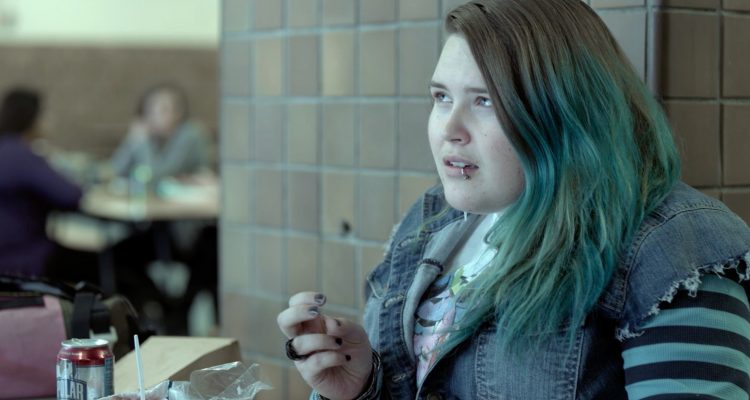MONTREAL — We are introduced to Lily Mae Harrington’s overweight and therefore unpopular Jill in Biology class after she and Thomas Mann’s Matt — similarly ridiculed for his eyepatch — are paired up for a dissection by elimination, the two undesirables in the class left without lab partners. She attempts to tell a joke and he reacts, puzzled. She tries again, and gets a similar reaction.
Such is a recurring theme in Ian MacAllister McDonald’s directorial debut “Some Freaks,” making its World Premiere at the Fantasia Film Festival, which follows a trio of titular misfits and best friends (the third is Ely Henry’s gay Elmo Moss), first in high school as they navigate uncharted waters, wearing their quirks on their sleeves, then in college, as they overcome the things that make them different. Even if the film contains jokes and funny moments, it rejects any sense of humor, denying its audience any levity from the harsh ideas that it sets forward about standing out from the pack. Painted with drab, sterilized blue hues in its first half and grimy warms once they reach the collegiate holy land, possessed with a violent shakiness in its handheld scenes, the film’s ugly aesthetic only somewhat matches its tone. It is a melodrama trying to wriggle out of its genre, containing an edginess that proves too self-serious to really feel fun. “Some Freaks” is certainly not the kind of light and entertaining film that having Mann (who recently headlined in 2015’s indie masterstroke “Me and Earl and the Dying Girl”) in the cast would suggest.
 The film objectifies its characters at the outset, defining them by their immediate negative qualities: Matt has an eyepatch, Jill is overweight, and Elmo is gay. It is not until the second act when the three characters leave the hellish echo chamber that is high school that these defining characteristics are negated, as outward appearances are blurred and true natures surface. Once Matt replaces his eyepatch with a glass eye, or Jill begins to lose weight, the folly of allowing an over emphasis on how one looks to the point of it overtaking identity becomes clear.
The film objectifies its characters at the outset, defining them by their immediate negative qualities: Matt has an eyepatch, Jill is overweight, and Elmo is gay. It is not until the second act when the three characters leave the hellish echo chamber that is high school that these defining characteristics are negated, as outward appearances are blurred and true natures surface. Once Matt replaces his eyepatch with a glass eye, or Jill begins to lose weight, the folly of allowing an over emphasis on how one looks to the point of it overtaking identity becomes clear.
These are fairly simple concepts executed in an ordinary way, however, and the more interesting story here lies in Lahlan Buchanan’s Patrick. With the chiseled appearance of a model, there is no way that McDonald expects us to believe that this is a high school student. Yet there he is, on the opposite side of our main trio’s woes. In spite of his popularity however, he is just as misconstrued as everyone else; and his attempts to try and connect and find somebody to appreciate him for something other than his looks are met with heavy resistance. He plays secondary love interest to Jill, who rebukes his attempts at friendship with insults and cold shoulders, as she reacts with the same malice that had been afflicted onto her.
 McDonald shows a rare willingness to vilify his characters. Reacting with a spontaneity that threatens to erupt at any moment — even to some of the most trivial or innocuous things — his broken characters harbor an understandable fragility. Yet, despite this, it is still quite difficult to really sympathize with any of them, to feel the weight of their arguments and not feel underwhelmed. One cannot help but wish that these people weren’t so aggressively antagonistic towards each other, or that their lines (specifically Jill’s) weren’t so unbelievable and pompous. Regardless, it does showcase that terrifying concept that is ever so prevalent in modern youth, in which prejudice begets more prejudice. [C]
McDonald shows a rare willingness to vilify his characters. Reacting with a spontaneity that threatens to erupt at any moment — even to some of the most trivial or innocuous things — his broken characters harbor an understandable fragility. Yet, despite this, it is still quite difficult to really sympathize with any of them, to feel the weight of their arguments and not feel underwhelmed. One cannot help but wish that these people weren’t so aggressively antagonistic towards each other, or that their lines (specifically Jill’s) weren’t so unbelievable and pompous. Regardless, it does showcase that terrifying concept that is ever so prevalent in modern youth, in which prejudice begets more prejudice. [C]
Click here for the rest of our coverage from the 2016 Fantasia Film Festival.

